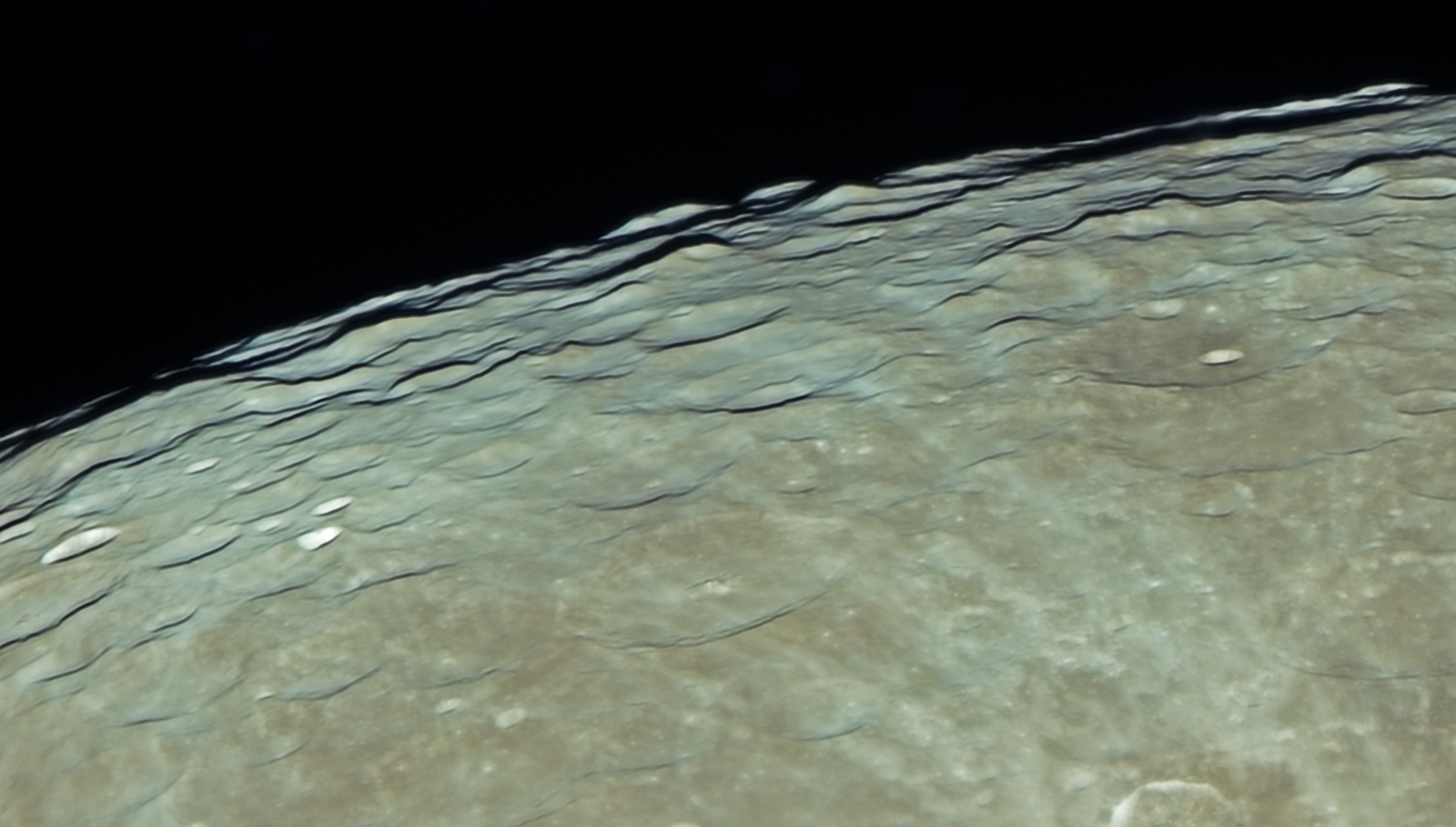
As a child, my family would visit the Great Smoky Mountains in Tennessee, often multiple times a year. I imagine future lunar citizens might vacation in the Apenninus mountains, a beautiful chain of mountains that curves along the edge of Mare Imbrium on the left side of this image. Named after a mountain range in Italy, it has a small gap (perhaps analogous to the Cumberland gap of my childhood home) that opens the way from Imbrium to the sea of Serenity to the right. Were the lunar maria actual oceans, there would for sure be a vibrant trading city located here as the most practical passage between these two great seas.
Alas, this is the Moon, and the Maria are indeed not waterways, but vast plains of cooled lava… well… a sea of frozen lava is still a sea, isn’t it?
Taken on the night of May 16, 2024, the lighting here is really quite outstanding for great views of a number of prominent features in this area of the Moon. At the upper left we see the crater Plato, which often looks quite shallow and flat. Due to the Sun’s angle at this time however you can see the highly detailed walls of the crater rising high above the smooth surface of Mare Imbrium. To the upper left of Plato, you can see a small ring of light that is the crater Fontenelle. Through the eyepiece this night, that ring was glowing in the darkness of the terminator like the lights of a great city in the night.
Midway down and to the left of the Apenninus mountains is another flat and smooth crater Aristarchus. Like Plato this crater appears to be older than the Mare Imbrium as its floor is flooded with the same cooled lava that surrounds it. A younger crater at the southern tip of the mountain range is Eratosthenes. There is no smooth floor here, and in the center, you can see a tiny dot of light that is the central peak of a mountain of material that was rebounded when the impact crater was formed.
While the Moon is not quite as dynamic as the Sun, it is different every night, and even every hour you can see changes in the surface as the light and shadows dance across the lunar day. Even the smallest telescope or binoculars will reveal this world to you, and I encourage you to go take a look as often as you can.





